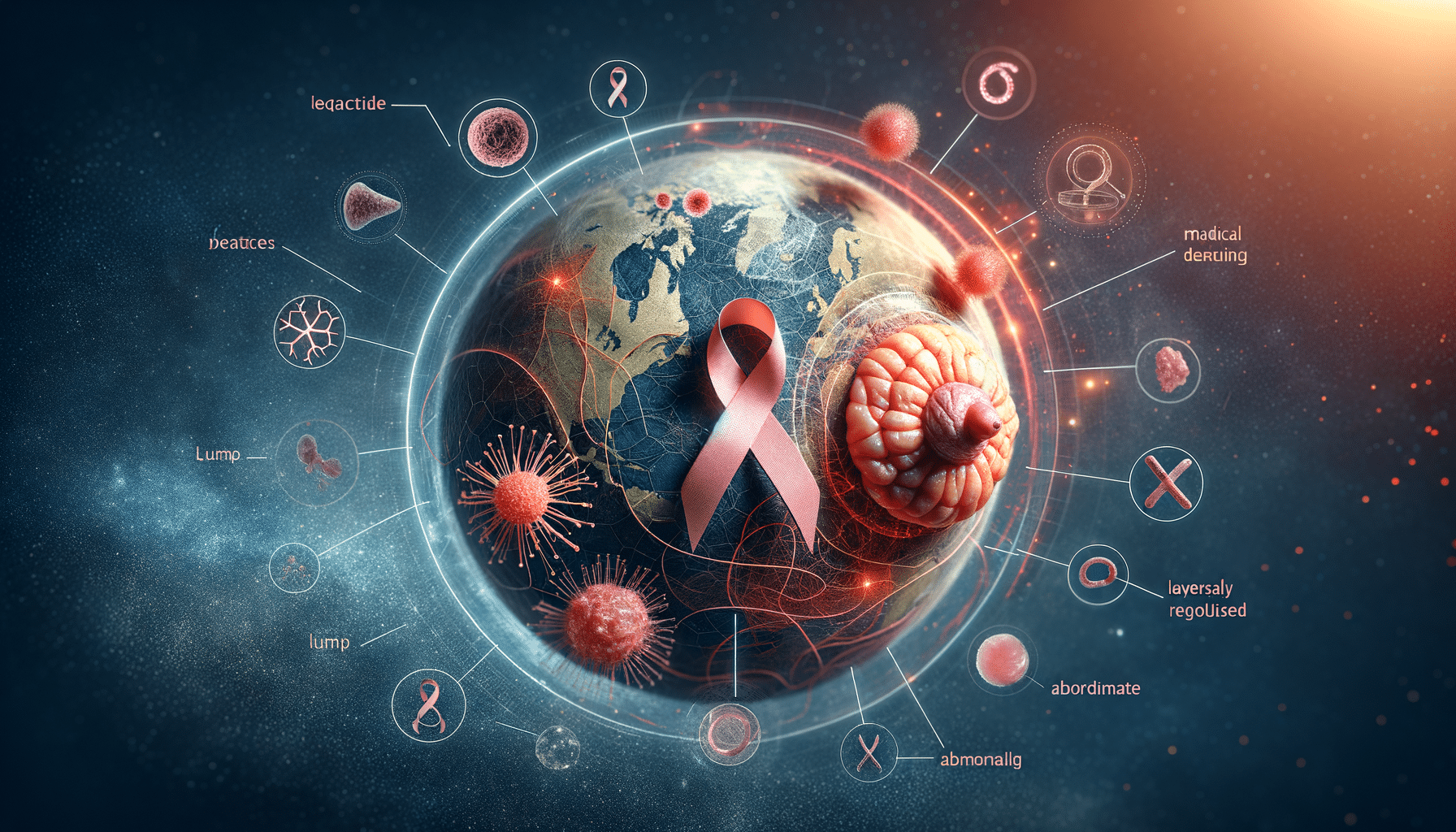
Could You Spot the Early Signs of Breast Cancer?
Understanding Breast Cancer and Its Early Indicators
Breast cancer remains one of the most common cancers affecting women worldwide. Early detection is crucial as it significantly increases the chances of successful treatment and survival. Understanding the early signs and symptoms of breast cancer can empower individuals to seek medical advice promptly, potentially saving lives. The journey of recognizing these signs often begins with awareness and education.
The early indicators of breast cancer can vary widely among individuals. Some may experience noticeable changes, while others may not exhibit any symptoms at all. Key early signs include:
- A lump or mass in the breast, often painless and hard with irregular edges.
- Swelling of all or part of the breast, even if no distinct lump is felt.
- Skin irritation or dimpling, sometimes resembling the texture of an orange peel.
- Nipple retraction or pain, indicating a change in the usual breast contour.
- Redness or flaky skin in the nipple area or the breast.
- Unusual nipple discharge, particularly if it is bloody.
These symptoms do not always indicate cancer, but they do warrant further investigation by a healthcare professional. Regular self-examinations and clinical screenings are vital components of early detection strategies.
The Role of Self-Examinations and Screenings
Regular self-examinations and mammography screenings are pivotal in the early detection of breast cancer. Self-examinations allow individuals to become familiar with their breasts, making it easier to notice any unusual changes. While self-exams are not a substitute for professional screenings, they can be an invaluable tool in catching potential issues early.
Conducting a self-examination involves a few simple steps:
- Visual inspection in front of a mirror to check for any visible changes in size, shape, or symmetry.
- Physical examination by using the pads of your fingers to feel for lumps or irregularities in a systematic pattern, such as circular motions or vertical lines.
- Checking for any discharge from the nipples by gently squeezing the area.
Mammography, on the other hand, is a specialized medical imaging technique that uses low-dose X-rays to detect abnormalities in breast tissue. It is recommended for women over the age of 40, or earlier for those with a family history of breast cancer. Regular screenings can detect tumors that are too small to be felt, making them an essential part of preventive healthcare.
Factors Influencing Breast Cancer Risk
While anyone can develop breast cancer, certain factors can increase an individual’s risk. Understanding these factors can help in making informed decisions about screenings and lifestyle choices. Some of the most significant risk factors include:
- Age: The risk of breast cancer increases with age, with most cases diagnosed in women over 50.
- Genetic mutations: Inherited mutations in genes such as BRCA1 and BRCA2 significantly elevate the risk.
- Family history: A family history of breast cancer can indicate a higher risk, especially if close relatives were diagnosed at a young age.
- Personal history of breast conditions: Previous breast cancer or certain non-cancerous breast diseases can increase risk.
- Dense breast tissue: Women with dense breasts have a higher likelihood of developing breast cancer.
Other lifestyle-related factors include alcohol consumption, obesity, and hormone replacement therapy. While some risk factors like genetics cannot be changed, lifestyle modifications can be made to potentially reduce risk.
Myths and Misconceptions About Breast Cancer
Despite widespread awareness, several myths and misconceptions about breast cancer persist. Dispelling these myths is important for informed decision-making and reducing unnecessary fear. Some common misconceptions include:
- Myth: Only women with a family history of breast cancer are at risk. Reality: Most women diagnosed with breast cancer have no family history of the disease.
- Myth: Breast cancer always presents as a lump. Reality: While lumps are common, breast cancer can manifest in other ways, such as skin changes or nipple discharge.
- Myth: Mammograms can cause cancer to spread. Reality: Mammograms are a safe and effective screening tool with no evidence of spreading cancer.
- Myth: Young women do not need to worry about breast cancer. Reality: While less common, breast cancer can occur in younger women, and awareness is crucial at all ages.
Understanding the facts about breast cancer can lead to better prevention and early detection strategies, ultimately contributing to improved outcomes.
The Importance of Support and Resources
Receiving a breast cancer diagnosis can be overwhelming, but support and resources are available to help individuals navigate this challenging journey. Emotional support from family, friends, and support groups can provide comfort and encouragement. Many organizations offer resources such as counseling, educational materials, and financial assistance to those affected by breast cancer.
Support groups, whether in-person or online, offer a platform for individuals to share experiences, advice, and coping strategies. These communities can be a source of strength and solidarity, reminding individuals that they are not alone in their fight against breast cancer.
Healthcare providers also play a crucial role in offering guidance and treatment options. Regular communication with medical professionals ensures that individuals receive the most appropriate care tailored to their specific needs. Additionally, advancements in medical research continue to improve treatment options and survival rates, offering hope for those affected by breast cancer.